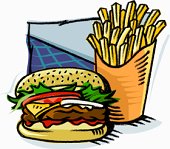
Triglycerides are the chemical name by which most fats in food are known. They are also found in blood plasma after the body converts the foods we eat, such as carbohydrates. The body doesn’t use all of calories that we ingest, and stores them for later use, releasing triglycerides as we need them.
If there are too many unused triglycerides present in plasma, this is called Hypertriglyceridemia. Research has linked this disorder to Coronary Artery Disease, and Diabetes Mellitus.
Your physician can find out if your triglycerides levels are too high, with the same tests used to determine your cholesterol levels. The guidelines set by the national cholesterol education program are listed below: These are based on plasma triglyceride levels, taken after fasting overnight.
Normal Less than 150 mg/dL
Borderline-high 150 to 199 mg/dL
High 200 to 499 mg/dL
Very high 500 mg/dL or higher
If your levels are too high, you can reduce them by making simple changes in your lifestyle and eating habits. Which are relatively similar to reducing cholesterol.